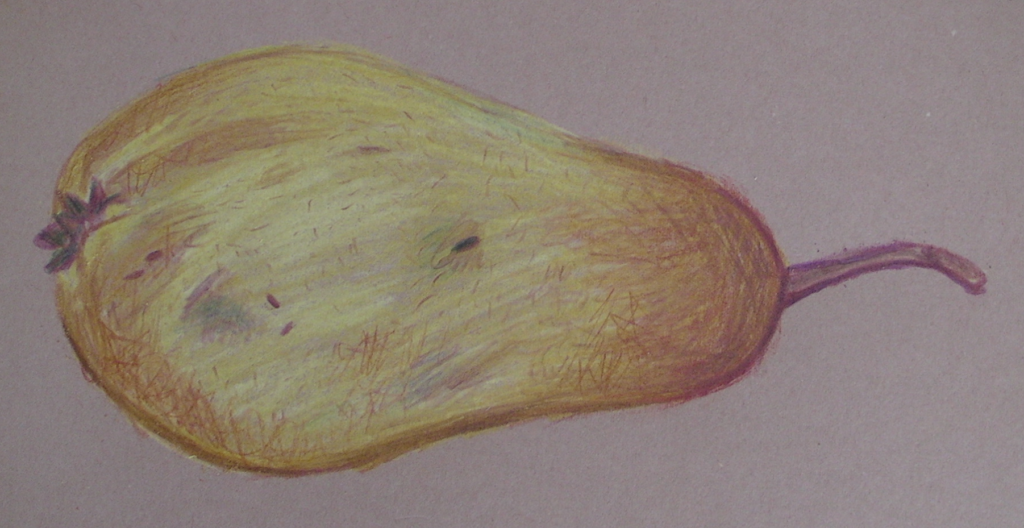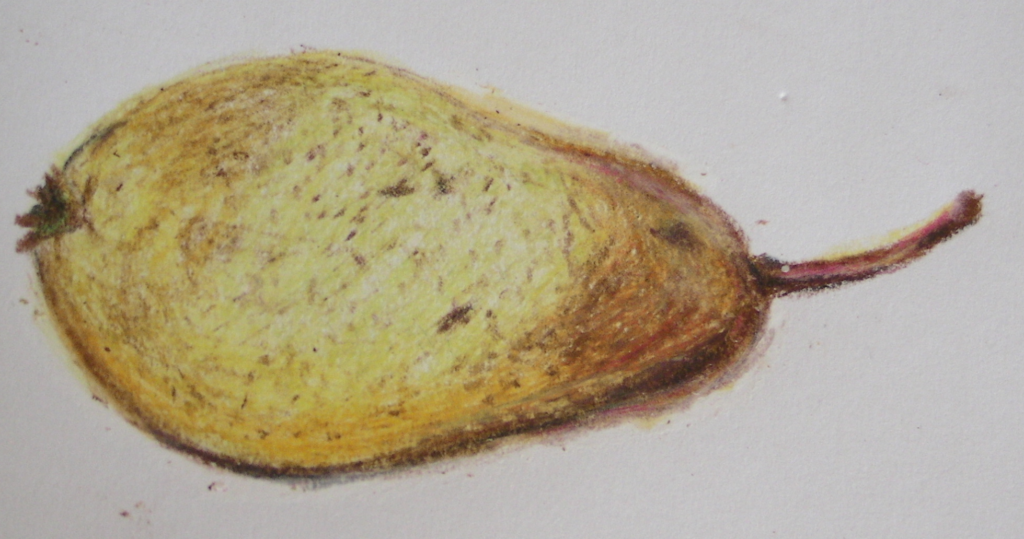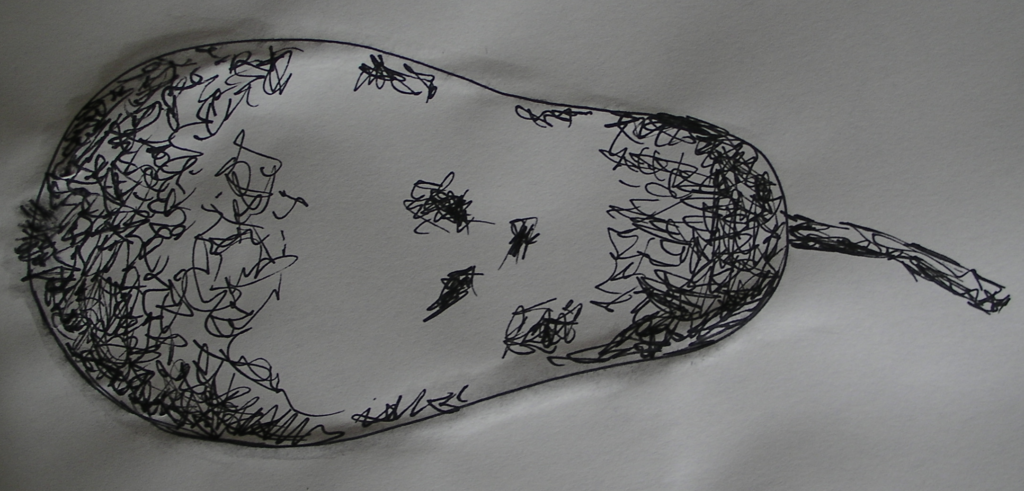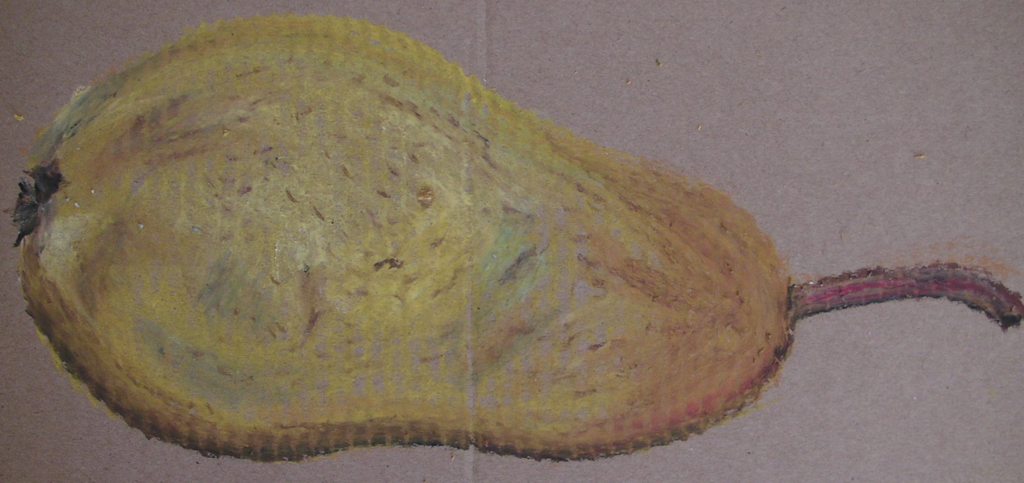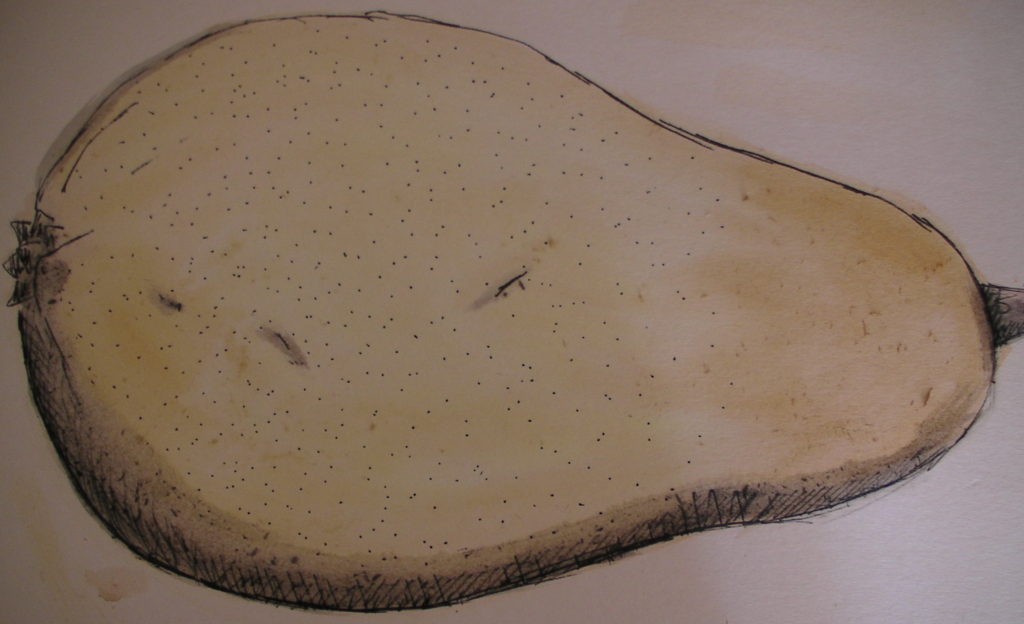Brief
Create a sketchbook with different kinds of coloured and textured papers. Use a variety of surfaces including rough textures such as sugar paper and head watercolour paper and smooth, shiny surfaces such as brown paper and cheap typing paper. Collect the sheets together in a binder or with a bulldog clip.
Collect a range of drawing implements. Include the cheap and throwaway such as children’s felt tip pens, food dyes, ballpoints, chalks, oil pastels, pots of sample decorating paints. Force yourself to put familiar materials to one side and to explore unchartered territories.
Choose something like: a cake with icing, cherries, hundred and thousands or other topping, a shoe or trainer, or a piece of fruit with a. bite taken out of it.
Draw your object on each of the sheets in your sketchbook using a different drawing material for each one. Practice using the same media in different ways and at different scales. Explore cross-hatching, stippling, splattering, smudging and dry brush work.
Investigate the properties of mixed media; see which marks work together or not, and how you can alter marks with a rubber, and by rubbing and smudging with your finger. Some of the wetter media can be modified by adding water or dilute bleach. Some of the fine line pens or felt tip pens may also be water soluble.
Label each of your pieces of work with the media used and the combinations explored.
I chose a pear for this exercise and the drawings/details of materials used can be seen below.
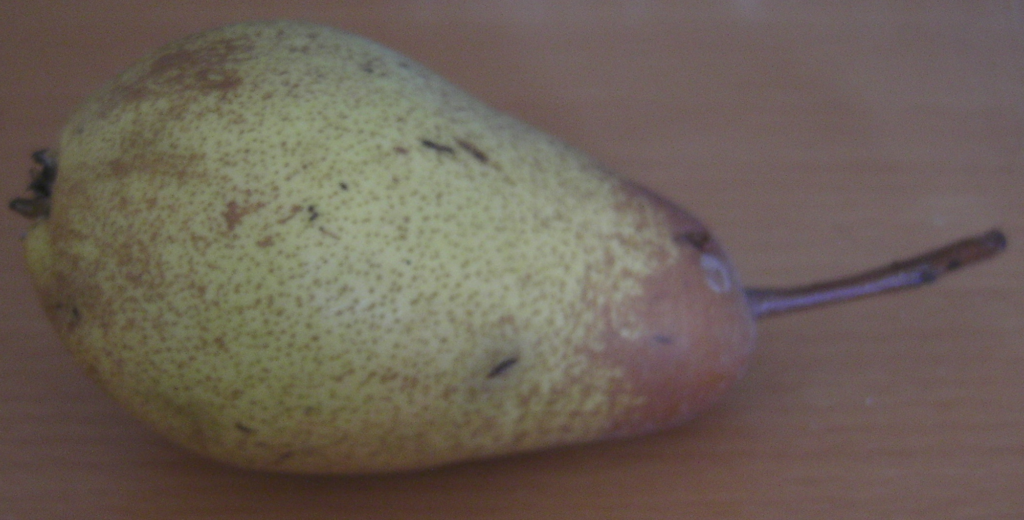
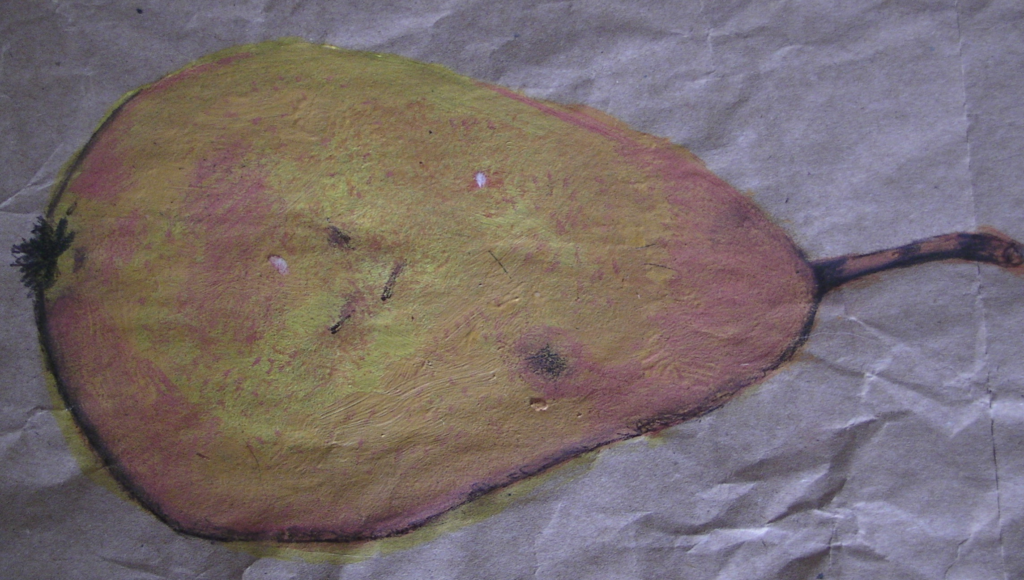
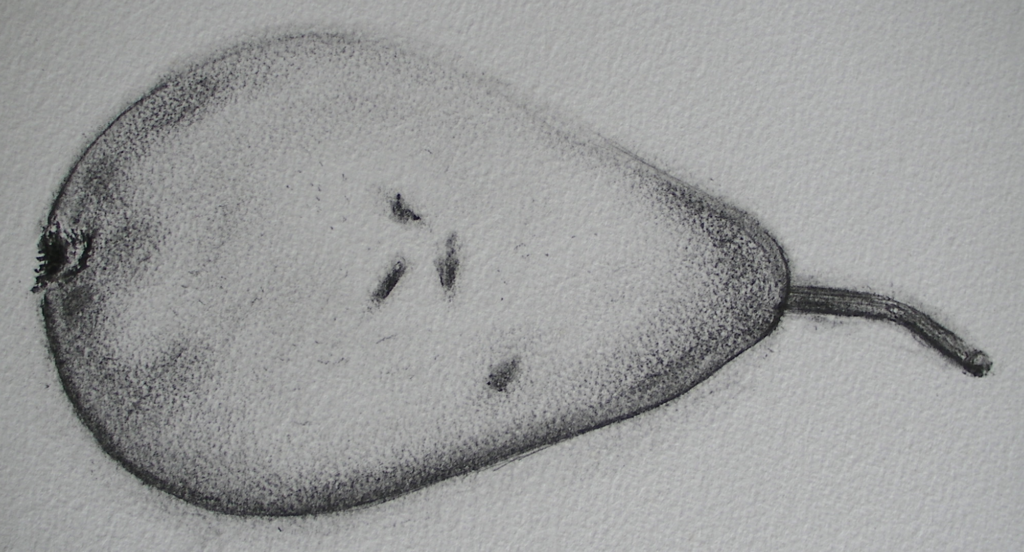
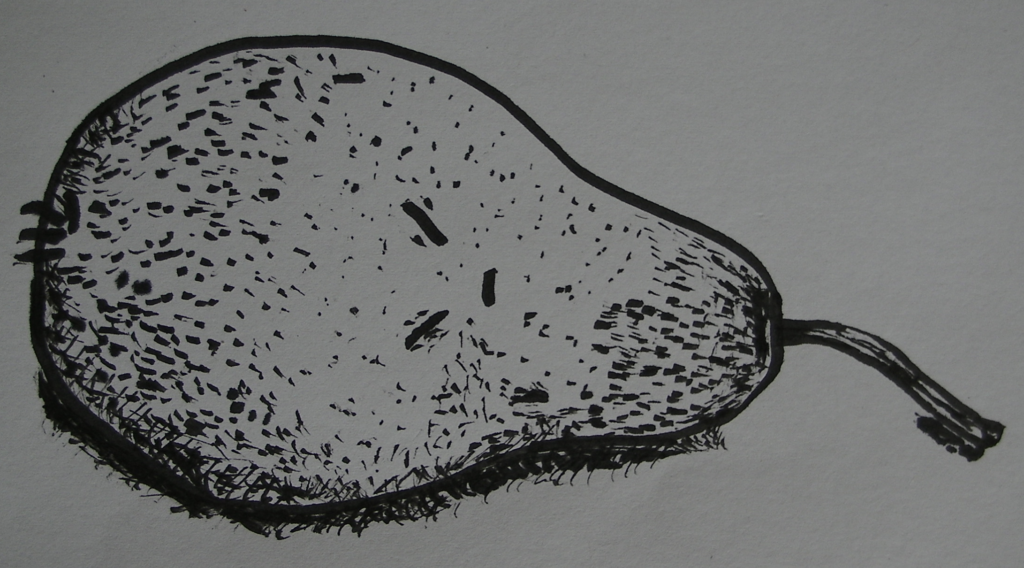
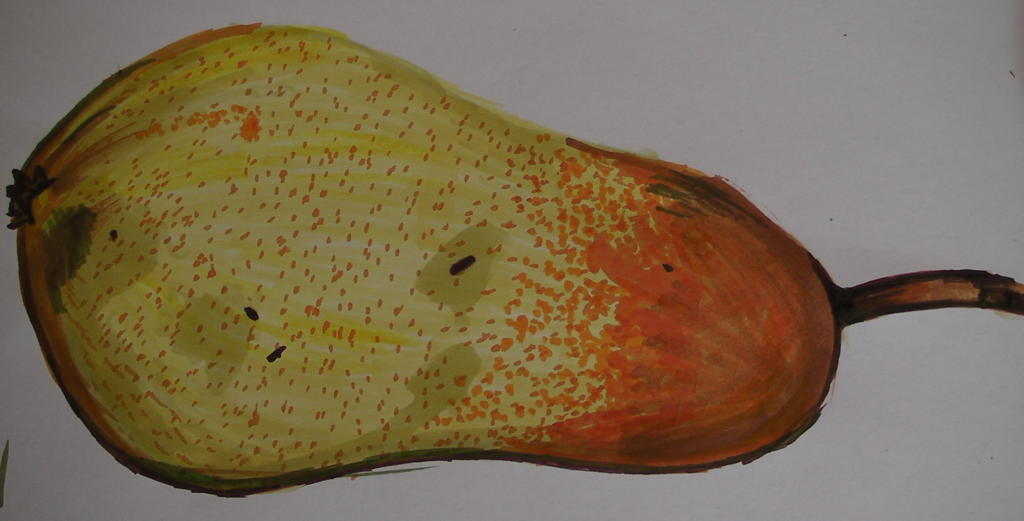
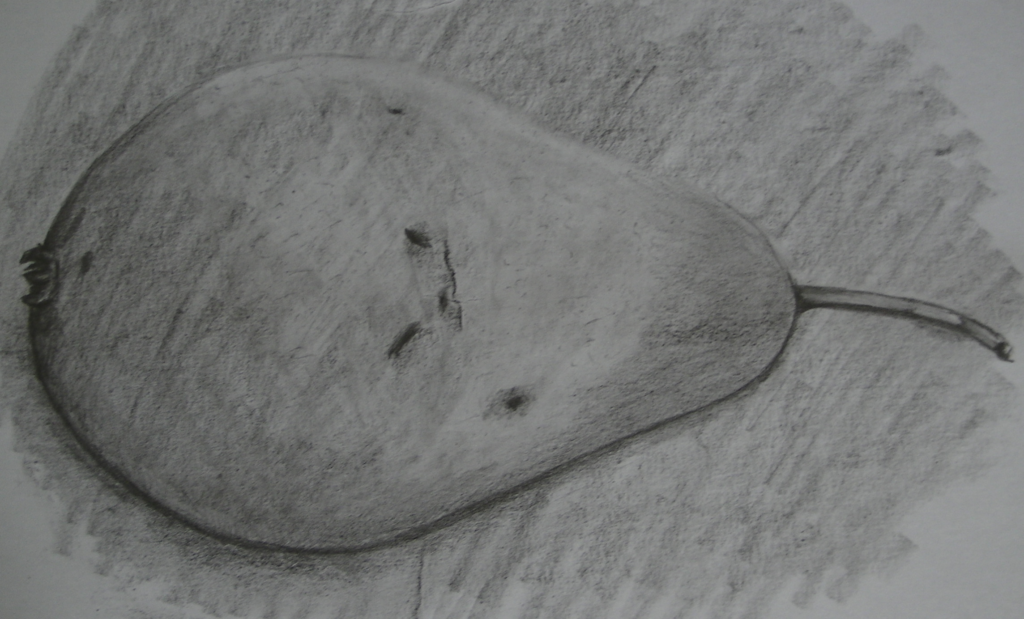
I found this exercise really beneficial as it required observation and to not use a computer. It has been a long time since I have done any such work, so I found it enjoyable to do this again. I felt some of the outcomes worked better than others and I was not as experimental as perhaps the brief suggested, but as an exercise in using non-digital media, it was personally satisfying and has encouraged me to do observational drawing/painting more often.
